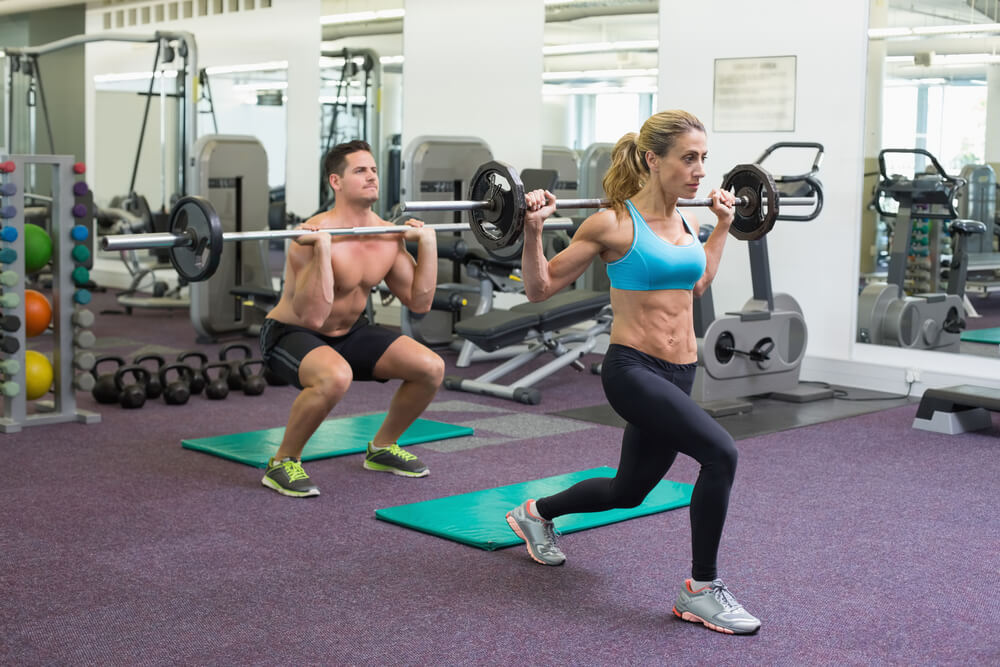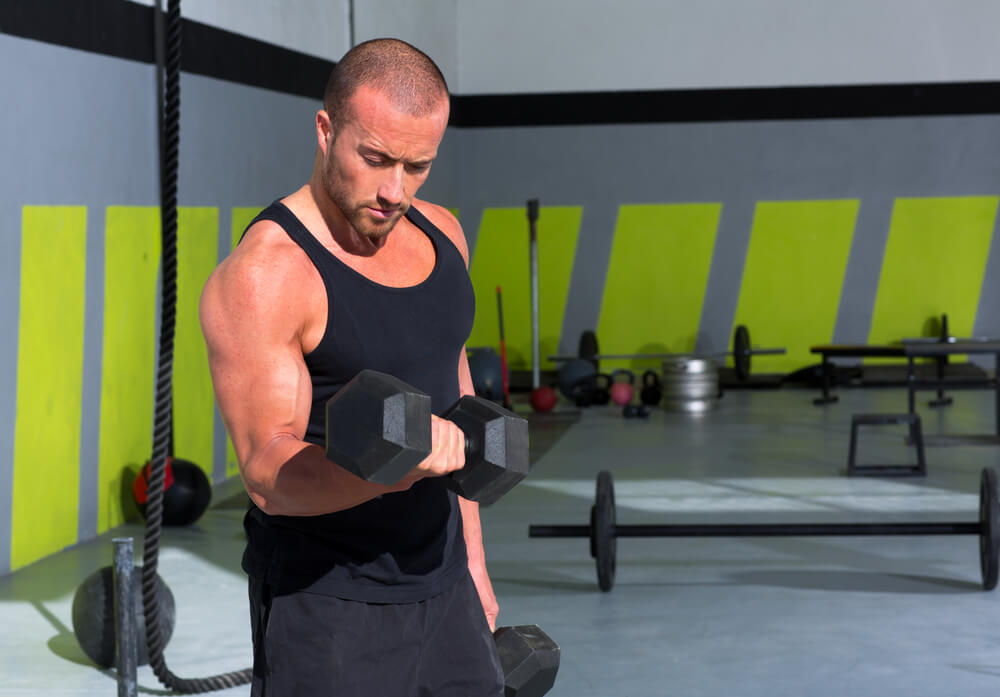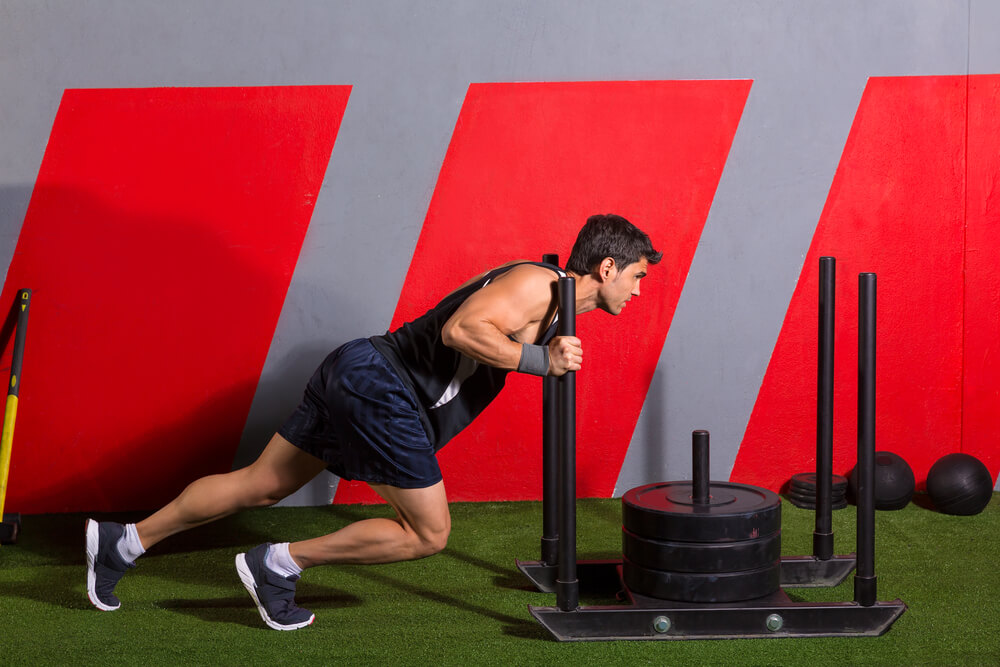Walking down the supplements section of your local grocery store, past the protein and creatine powders, you’ll come across entire rows of metabolic boosters, fat burners and all sorts of “magic pills” stating you’ll drop the pounds and blast the fat with the supplements.
There is truth to some, nothing but hocus pocus with others, but much of the claims come down to your metabolism. Boosting your metabolism allows your body to burn through more calories, which in turn does allow you to strip down the fat and enjoy more definition. It’s also why metabolic conditioning has become increasingly popular.
What exactly is metabolic condition and how does it benefit your body?
We’ve got all the answers to your questions right here.
What is Your Metabolism?
Before jumping head first into metabolic conditioning, we’re going to take it all the way back to metabolism and what exactly it is. You know it is how fast your body goes through calories. Chances are you always had the one kid in school who claimed they had a slow metabolism, which is why he or she weighed so much more (who knows, maybe that was you and now you’re looking to avenge yourself).
But what in the world is metabolism actually?
Understanding this will help you understand not only metabolic conditioning but also why certain foods are better for boosting your metabolism than others.
As the Mayo Clinic (2014) outlines, metabolizing is something all living creatures do. From humans down to one celled organism, metabolism is the process where the body, whatever form it is in, takes food and processes it down into energy. More advanced creatures are able to take in more objects as energy sources in order to fuel the body. During the process, the body extracts calories from the food and combines it with oxygen taken in through the lungs. By combining the two, the energy is delivered to cells throughout the body as energy.
The rate of which your body uses energy created from food and oxygen is known as your metabolic rate (or just metabolism).

What Dictates Your Metabolic Rate?
Every individual is a bit different. We all have that one friend who can eat seemingly everything and never gain an ounce. Then when they lift weights for the first time in years they seemingly drop weight. If that is you then you’re on the lucky side of the metabolic spectrum, as you can burn through more calories faster than most.
Even if you’re not the super metabolism individual, what goes into dictating your metabolic rate?
There are many variables at play, some of which includes your body size, age, and sex.
Essentially, the larger you are and the more muscles you have, the more calories you burn (by building larger muscles you burn more calories, which helps you become more defined. This is just another reason why you want to hit the weights).
In terms of your age, as you grow older your metabolism slows down.
This isn’t simply because your body just doesn’t require energy though. Instead, it is because as you age you may be less likely to workout, go for a run (due to injury problems) or lift weights. This results in a decrease of muscle and an increase in fat. The loss of muscle and increase of fat affects your drop in metabolism realistically more so than just aging.
Lastly, there is your sex.
Throughout evolution and the development of man, men tend to develop larger muscles. This is due to hundreds of generations of natural selection. Back before civilization or even common language, homo sapiens would select a mate based on the ability to give birth and the ability to provide. Stronger men with broad chests, backs and more muscles were seen as ideal mates and thus passed on their genetic materials.
While some would argue this hasn’t changed much over thousands of years, it is why men tend to be more muscular than women. It is also why men tend to burn more calories and have faster metabolisms than women as the additional muscle mass helps burn more calories (Live Science, 2011).
You don’t need to just accept your metabolic rate as gospel though. There is plenty you can do to boost your metabolism (after all, larger muscles mean you burn more calories). Two additional factors are involved, including physical activity and food processing.
During the day, calories actually “disappear.” Depending on your body, what you eat and other factors, anywhere from 100 to 800 calories are used to transport food, digest it or are simply absorbed and vanish.
More difficult foods to digest require more energy, which forces your body to burn more of the ingested calories, although it is difficult to know exactly how many calories your body is burning through food processing.
Lastly, physical activity is under your control.
These are the calories you burn from lifting weights, running or walking the dog around the block. While you can’t do much about your age or how fast your body processes food, you can impact your physical activity, which in turn has a major effect on your overall metabolism.

Metabolic Conditioning
Alright, so you now should have at least the basic understanding of what metabolism is, how your body derives energy from food and oxygen, and factors at play when determining your metabolic rate.
But what exactly is metabolic conditioning?
It kind of depends on who you ask. Personal trainers at the gym may say one thing, while a dietitian may say something a bit different. In reality, it all boils down to structured patterns set up to receive the desired reaction from your body. Of all the variables involved with your metabolism, physical activity is the one you have the most control over, and it is what you’ll adjust for metabolic conditioning.
When you perform a physical activity, your body burns energy. However, what you might not realize is there are different kinds of energy your body uses. In fact, you can break down energy into an immediate, intermediate and long term energy method.
During metabolic conditioning, you’re instructing your body on how to use these different kinds of energy in order to boost your metabolic rate.
The Three Energies
Back in the supplement section of the store, you pick out your favorite chocolate protein (because that vanilla stuff just never tastes right), and you opt for a creatine.
Why creatine?
Well besides the fact that everyone else at the gym is using it, this is a natural chemical your body produces. It also is the immediate form of energy. Your body’s muscles fill with creatine phosphate, which gives you quick bursts of energy. By increasing your creatine levels (make sure to not exceed the recommended dosage), you can increase your immediate energy. It is why you can squeeze off one or two more reps after training with the creatine. This form of energy is explosive but runs out quickly. Think of it as the nitrous oxide you see in all those car chase movies.
Guy flips on the nitrous oxide and BAM!
The car gets an instant pick up for a few seconds. That’s more or less what your immediate energy system of creatine phosphate delivers. It’s quick, powerful, but doesn’t last long and can take several minutes to recover.
Your next system of energy is referred to as the glycolytic pathway.
It is used for physical activities that last more than a few minutes. When you go for a short jog or extended weight lifting session, you tap into this form of energy. While not as explosive, it is long lasting and doesn’t take as long to recharge.
The third form of energy is your long lasting energy, known as the aerobic pathway. This is the kind of energy you draw on during long runs. Basically, the body turns to fat storage for its energy and uses it for those long bike rides.
With an understanding of these three different kinds of energy, it is now possible to explain how metabolic conditioning works and what it can do for your body.
How Metabolic Conditioning Improves Your body
Your body does have three different kinds of energy systems in place, but each one is not specific to itself. It isn’t like you switch from first gear energy and shift into second gear energy level.
There is some crossover.
Knowing how to exploit these crossovers and pushing your energy consumption to the fullest is what helps you burn through more calories, all based on how you stack your workout and sets.
The idea of metabolic conditioning is two fold. The first is to increase calorie usage during a given exercise and the second is to boost calorie burn during the several hours following a workout. Of course, it also helps with your performance, which is why not all metabolic conditioning circuits are the same for everyone. It comes down to what area of your athletic performance you want to improve upon.
Metabolic conditioning is made up of two parts.
The first is the actual workout and the second is the rest period in between the workout. In a way, it is a kind of interval training. As there are three different kinds of energies your body pulls from, there are three different kinds of metabolic conditioning circuits you need to look towards (Men’s Fitness, 2016).
Metabolic Conditioning Goals and Example Workouts
The immediate energy system (your creatine system) delivers you the burst of power required to pump out these additional reps.
Improving your immediate energy delivery system helps boost your ability to maximize power. This can help increase both strength and size with proper conditioning. If you are interested in this kind of conditioning, you want a workout to rest ration of 1 to 10. In other words, for every one second your workout, you’ll want around 10 seconds of rest. This form of energy takes the longest to regenerate, so by waiting for your immediate energy to refill, you’ll instantly go back to using it, which trains your body as to the kind of energy you want to use while also boosting the speed of which the energy refills.
To train your immediate power, perform 10 seconds of plyometric push-ups, followed by (90 to 120 seconds of rest (realistically you should shot for 100 seconds, but it’s easier to go a minute and a half or two minutes). Use the same timing intervals for a box jump and broad jump, then repeat it four times.
If you are interested in boosting your intermediate energy system through metabolic conditioning, you want a workout to rest ratio of one to two. This is going to help improve your overall performance (such as playing a pickup basketball game). An example workout is 20 seconds of a kettlebell clean, followed by 40 seconds of rest. Use the same time ratio for the kettlebell swings, snatches and push-presses, then repeat a second time.
If you want to boost your long term energy system (this is great if you are training for your first half marathon), you want a workout to rest ratio of four to one.
However, instead of jogging for four minutes and resting for one, stick to the kettlebell. Perform all four of the previously mentioned kettlebell moves, 30 seconds each and no rest in between, then break for 30 seconds at the very end of all four exercises. Repeat the workout two more times.
Conclusion
Metabolic conditioning can help you reach your fitness goals while also improve performance as well.
While you don’t have total control over your metabolism, you can alter how it works based on your own workout method.
By identifying the kind of improvements you want to see in your body and the kind of energy you want to pull from, you’ll see not only improvements in your athletic performance but your overall physical fitness as well.
-Terry Asher
Terry Asher
Latest posts by Terry Asher (see all)
- Better Family – Product Review Liquid Daily 2 oz - Dec 16, 2024
- Post-Workout Recovery: The Key to Optimal Performance - Nov 25, 2024
- Pre-Workout Supplements – Everything You Need To Know - Nov 18, 2024













[…] post Metabolic Conditioning – How Does It Benefit Your Body appeared first on Gym […]
Great article, what I needed to hear! Love the fact you back all your statements with science. Kep it up sir!
Thank you Tony!
Glad you enjoyed the article… and always backed by science here 🙂
-Terry Asher
[…] course, some people burn more calories than others thanks to an increased metabolic rate. Metabolic rates have been covered in other articles (and the idea in itself is an article all its […]
[…] idea of metabolic training is basically to boost your metabolic rate, similar to metabolic conditioning[4]. There are ways you can do this. For starters, it begins with the kind of food you […]
[…] will want to look for ways to boost your metabolic rate while you workout. This helps burn more calories, which in turn gives you a greater bang for your […]
[…] water also helps with your metabolic rate. This way, you will burn more calories throughout the day, which in turn will help you slim […]
[…] will want to look for ways to boost your metabolic rate while you workout. This helps burn more calories, which in turn gives you a greater bang for your […]
[…] our metabolisms are faster, our bodies convert nutrients quicker—resulting in more energy, and less fat. Cayenne […]
[…] our metabolisms are faster, our bodies convert nutrients quicker—resulting in more energy, and less fat. Cayenne […]
[…] that depends on a number of factors, including your metabolic rate. A higher metabolic rate is great for keeping off weight, but it also means you’re going to burn through added protein […]
[…] that depends on a number of factors, including your metabolic rate. A higher metabolic rate is great for keeping off weight, but it also means you’re going to burn through added protein […]
[…] that depends on a number of factors, including your metabolic rate. A higher metabolic rate is great for keeping off weight, but it also means you’re going to burn through added protein […]
[…] that depends on a number of factors, including your metabolic rate. A higher metabolic rate is great for keeping off weight, but it also means you’re going to burn through added protein […]
[…] that depends on a number of factors, including your metabolic rate. A higher metabolic rate is great for keeping off weight, but it also means you’re going to burn through added protein […]
[…] your overall health and conditioning improves, you can be more progressive with the caloric deficit. This is because your ability to […]